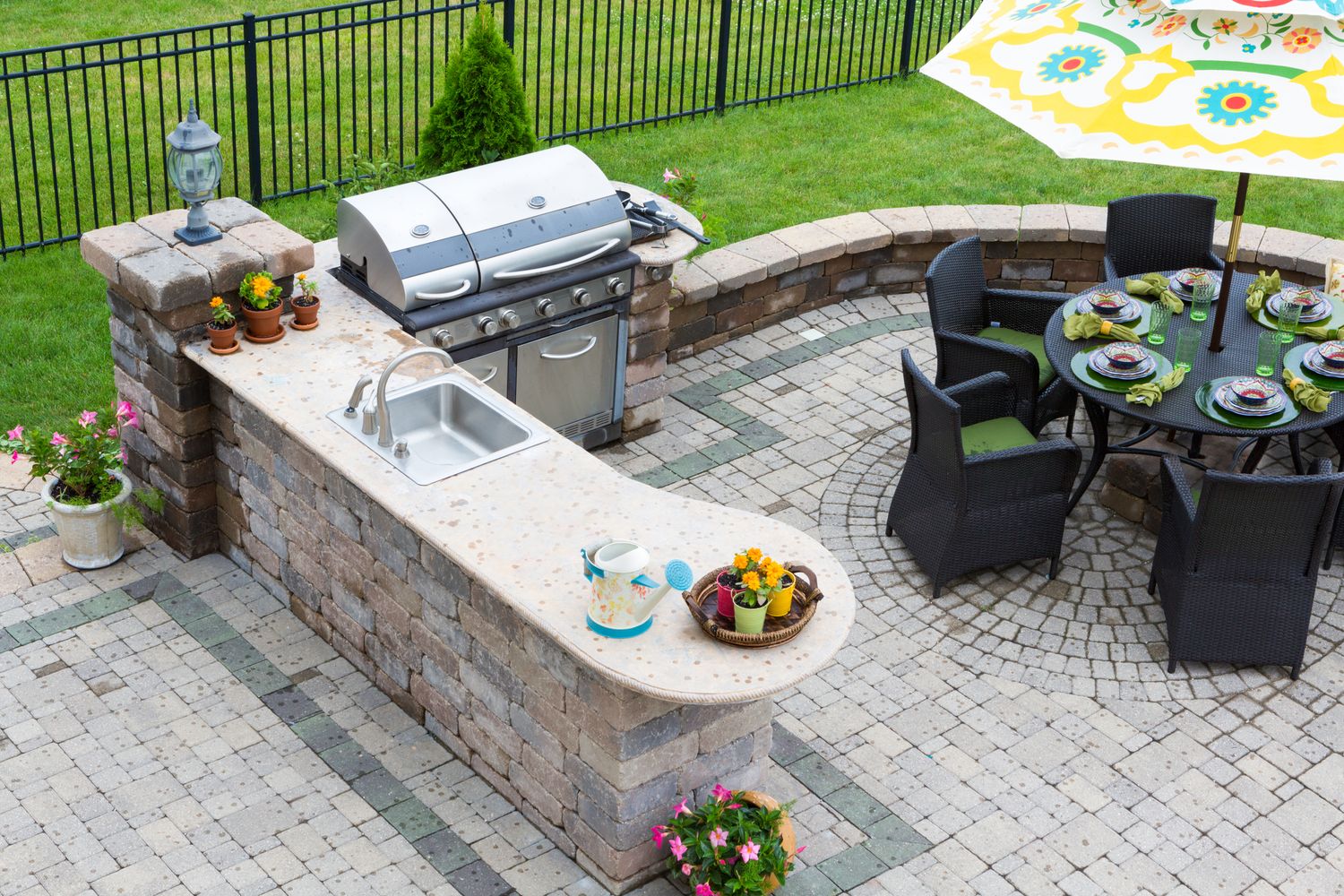You love your house, and you love your yard, but something just seems to be missing — like a patio!
A well-made patio can serve as the stylistic focal point for your garden and a functional gathering spot where your family can go to relax, play or dine. A patio can add layers of style to your home and tons of space for outdoor fun — as long as you plan your addition carefully.
So, where do you start? Here are three basic steps that will keep you on the right track:
1. Think About Use and Convenience Above All
You’ve heard the old real estate saying that everything always comes down to “location, location, location,” right? Well, this is true even on a small scale: You can’t make too many decisions about your patio until you decide where to put it.
If you’re operating with a small yard, your choices may be limited. If you’ve got some space, however, make sure that you ask yourself the following questions:
- How do you envision the patio being used? Do you see it as a cozy retreat where you can sip tea and read or a spot to entertain? Do you want the best of both worlds?
- Where is the most convenient space for the patio? Will your patio see the most use if it’s easily accessed via the kitchen? How close is it to your pool, hot tub or garden?
Once you have a good idea where you want your patio to be, consider testing out the space for comfort. Rope off the rough outline of your patio with some stakes and string, put out a few chairs and spend a week or two hanging out in the area in your spare time.
Envisioning your future in that space can help you gain some clarity on things like layout, size and landscaping. It can also help you spot issues involving lighting and shade that could be a problem after your patio is built.
2. Find a Patio Contractor or Multi-Use Landscaping Company
Adding a patio to your home is a big job — not an afternoon do-it-yourself project that you can manage alone. Without professional assistance, you may overlook problems with the grading or slope of your lawn and drainage that could affect the longevity and usability of your patio — so hire a professional.
So how do you pick a good one? Here are some tips:
- Ask your neighbors or relatives. If someone you know has a beautiful patio, there’s no harm in asking who did the work. That can help you hone in on a good contractor really fast and you may even save money with a referral discount.
- Read online reviews. There’s nothing wrong with just doing a Google search for contractors and landscapers in your area, but make sure that you look at their reviews on Yelp, the Better Business Bureau and elsewhere. One or two negative reviews aren’t likely to be a problem, but you should look for trends and major issues with their work.
- Ask for several estimates. Ideally, you want to get at least three estimates. Beware of any contractor whose estimate is unusually higher or lower than others: A rock-bottom price may indicate that a company uses cut-rate materials and a hefty price tag could indicate you’re paying a premium for the company’s name and reputation.
Getting estimates also allows you the chance to see if a contractor’s vision aligns with yours — before you commit to their services. You should also make sure that they’re prepared to handle the technical details of the installation process, like checking for buried gas and water lines and getting the right permits before they build.
3. Talk About Budget, Materials and Design Elements
Once you’re face-to-face with a contractor, it’s time to talk about the “big three” factors involved in your project: design, materials and budget.
Don’t be afraid to address your budget early in your conversation because, big or small, that can dictate a lot of the options you have. You don’t want to plan a huge, multi-level patio with all of the extras only to find out that you can’t afford it.
Design and material elements can be the toughest decisions for homeowners to make when they’re building a patio. You have to think about:
- Aesthetics: What style goes well with your home? You want a patio that complements the existing yard and structure, not something that looks jarring and out-of-place. This can influence your choice of materials since concrete might be perfect for one home while paver stones are better for another.
- Shape: Square, circular and rectangular patios are common, but you can also opt for curved edges, wraparounds and bi-level patios that will accommodate different uses.
- Style: Do you want a plain patio or one with decorative walls? Do you want built-in stone seating and a fire pit or just a fire pit? Do you want an outdoor kitchen, water features or lighting? Do you need to add shelter from the sun to make your outdoor space more habitable? If so, consider adding a permanent roof or canopy that will provide some much-needed shade.
- Privacy: Do you need more than a patio to achieve your goals? A fence or privacy barrier could make you much happier with your space — especially if you view it as a retreat from the world.
It’s also wise to discuss landscaping. The addition of trees and shrubs can help your patio blend seamlessly into the design of your home and provide a natural privacy wall and reduce noise.
It’s important to go into this project with the understanding that it can take several weeks to achieve the perfect patio — even once the work gets started. Your patience, however, is bound to be rewarded with a lovely, useful outdoor area that will add beauty and value to your home for years to come.



